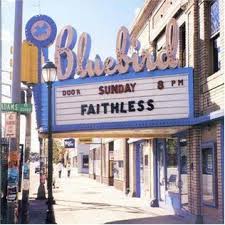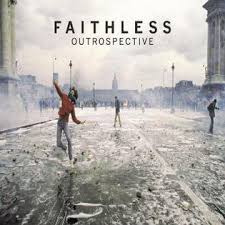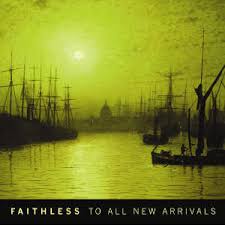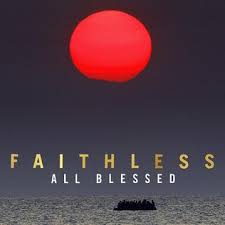Faithless – The Albums

Faithless – The Albums
Across three decades, Faithless shaped music with intelligence, soul, and fearless originality. From Reverence to All Blessed, they crafted albums that challenged expectations while moving bodies and minds. Each release marked a shift—not just in sound, but in purpose. As musical trends changed, Faithless stayed committed to depth, message, and evolution. This journey through their six studio albums celebrates that unwavering vision.
Reverence (1996)

Faithless exploded onto the scene in 1996 with Reverence, a genre-defying debut that blended house, trip-hop, and dub. Tracks like “Insomnia” and “Salva Mea” quickly became anthems, driven by Maxi Jazz’s thoughtful lyrics and Rollo’s production. The group didn’t just create club music; they sparked conversation and stirred emotion.
Meanwhile, Sister Bliss layered hypnotic melodies that elevated each track beyond expectation. Every song feels deliberate, urgent, and spiritually charged. As the album unfolds, it moves from defiance to introspection without losing momentum. Faithless made an immediate impact, refusing to follow trends or soften their message.
Consequently, Reverence built a loyal global fanbase from the very beginning. Even today, the album sounds bold and relevant. Unlike many debuts, it shows artistic confidence and technical finesse from start to finish. Although other artists copied their sound, few matched their depth. That year, Reverence didn’t just chart—it challenged the limits of electronic music. With this release, Faithless redefined what dance music could express.
Sunday 8PM (1998)

Faithless returned in 1998 with Sunday 8PM, expanding their emotional and sonic range without losing their edge. This time, they leaned into reflection, crafting tracks that balanced late-night introspection with dancefloor energy. “God Is a DJ” stood out, blending euphoria with philosophy in a way few acts attempted. However, the album never rushed—each track had space to breathe and build. Maxi Jazz delivered lyrics that felt personal, yet universally understood.
Sister Bliss and Rollo pushed the production into richer, warmer territory. As the album progressed, it explored love, loneliness, and spiritual connection. Faithless didn’t repeat their debut; they evolved, showing both restraint and ambition. Even quieter moments carried weight, inviting deep listening rather than distraction.
Sunday 8PM became more than a sequel—it became a statement of growth. The band’s willingness to take risks kept fans engaged and critics respectful. In an era of fleeting hits, Faithless aimed higher. This album cemented their role as thoughtful pioneers in electronic music.
Outrospective (2001)

By 2001, Faithless had mastered their voice, and Outrospective proved it with confidence and clarity. The album opened with urgency, immediately drawing listeners into a politically charged, emotionally layered journey. Tracks like “We Come 1” captured unity and defiance, becoming rallying cries across clubs and festivals. Still, the album refused predictability—Faithless balanced rhythm with reflection throughout.
Maxi Jazz delivered sharp, poetic commentary on everything from consumerism to identity. Meanwhile, Sister Bliss shaped expansive, melodic soundscapes that elevated the lyrical weight. Each transition felt intentional, creating a powerful emotional arc. Unlike their earlier work, this record leaned more into social consciousness without losing musical depth.
Faithless embraced evolution rather than comfort, always moving forward. As a result, Outrospective resonated with fans craving meaning alongside movement. The album didn’t just entertain—it challenged, provoked, and inspired. Even quieter tracks like “One Step Too Far” held undeniable presence. Faithless reminded the world that electronic music could carry both groove and gravity.
No Roots (2004)

Faithless took a bold leap in 2004 with No Roots, their most politically charged and thematically cohesive album yet. From the opening track, the band challenged injustice, inequality, and apathy with unflinching conviction. Maxi Jazz’s verses cut deeper, his voice now both narrator and activist.
Sister Bliss intensified the arrangements, blending orchestration with sharp electronic beats. Unlike earlier records, No Roots unfolded like a manifesto rather than a mixtape. Guest vocalists, including Dido and LSK, added texture without distracting from the core message. Every song built upon the last, creating a sense of movement and urgency. Faithless didn’t just evolve—they demanded evolution from their audience.
As the world grappled with war and division, this album spoke truth without hesitation. Even during quieter moments, the tension never faded. Therefore, No Roots became more than music—it became a mirror held up to society. Faithless proved again that dance music could carry weight, and they did it without compromise.
To All New Arrivals (2006)

Faithless released To All New Arrivals in 2006, offering a more contemplative and personal journey than their previous work. While earlier albums roared, this one often whispered—yet it lost none of its emotional power. Inspired by births within the band’s circle, the theme of transition runs throughout the record.
Maxi Jazz’s lyrics felt more intimate, revealing doubt, hope, and reflection with striking honesty. Meanwhile, Sister Bliss wove gentle piano lines into the electronic textures, softening the edges without dulling the impact. Even the guest spots, including Cat Power and Robert Smith, deepened the album’s emotional tone. Faithless explored life’s fragile moments while still grounding the music in rhythm. As each track unfolded, the message grew clearer: beginnings matter as much as endings.
Though less aggressive than No Roots, the album carried equal intensity in its vulnerability. Consequently, To All New Arrivals felt like a heartfelt letter rather than a public address. Faithless showed maturity here—less rage, more grace.
All Blessed (2020)

Faithless returned in 2020 with All Blessed, their first studio album in a decade and their first without Maxi Jazz vocals. Although his absence felt significant, the album chose reflection over replication. Spoken word features and guest artists carried the lyrical load with dignity and purpose. Themes of unity, truth, and societal division ran deeply through each carefully constructed track.
Sister Bliss and Rollo delivered lush, layered production that felt both current and unmistakably Faithless. The music moved with patience, rewarding repeat listens with fresh emotional nuance. Faithless didn’t chase trends—they honoured their legacy while addressing today’s fractured world. Tracks like “Synthesizer” and “Innadadance” bridged nostalgia with renewal.
Even without familiar voices, the heart of the band remained intact. Therefore, All Blessed felt like a thoughtful evolution rather than a forced comeback. Faithless proved they still had something vital to say—and a powerful way to say it.
Faithless never settled. With each album, they explored new ground while staying true to their core values: truth, rhythm, and meaning. Their legacy lives not only in club anthems, but in the quiet moments of introspection they inspired. Whether confronting injustice or welcoming change, Faithless always made music that mattered. And in doing so, they earned reverence of their own.
Recent Posts
Queen studio albums: A Review
Phil Collins Albums Ranked & Reviewed – Complete Guide to Every Studio Album
The best of Massive Attack
Let’s Make Magic
Book Your Event DJ Now




